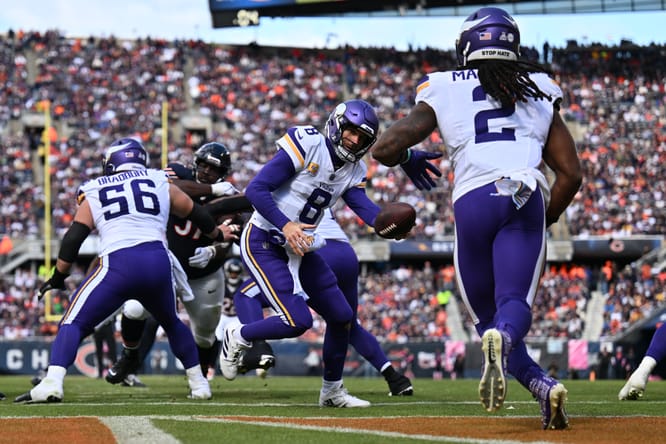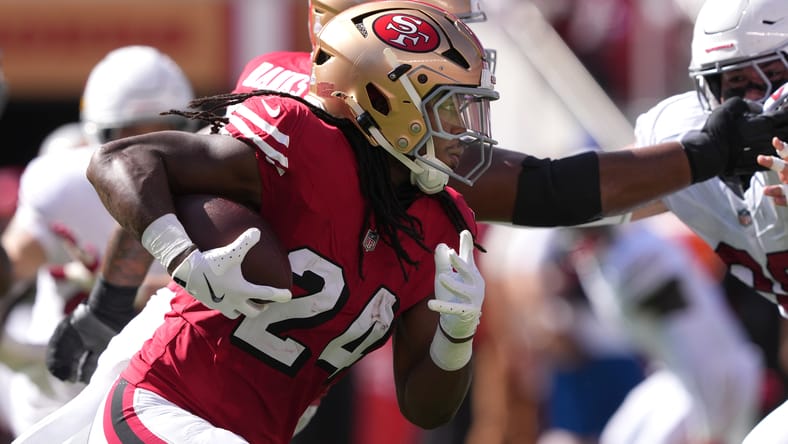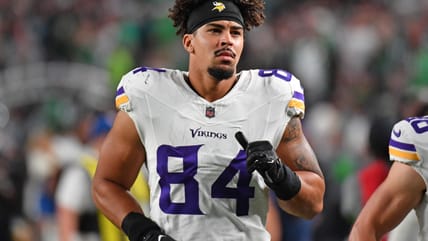There’s No Excuse Left for an Annoying Vikings Problem

When Kevin O’Connell was hired in the 2022 offseason, the Vikings were just one season removed from having an elite ground game, ranking sixth in rushing touchdowns, fifth in rushing yards, and fourth in yards per attempt in the 2020 campaign.
The Vikings have run out of excuses.
In 2021, those numbers began to decline, and they plummeted in 2022 under O’Connell’s leadership. A master at constructing an explosive passing attack, the coach has struggled on the ground. Sure, the available player personnel has played a role.

He has yet to have a good interior offensive line (although it’s relevant that Garrett Bradbury and Ed Ingram are better in the running game than in the passing game). The running backs were Dalvin Cook at the tail end of his Vikings career in 2022, his backup Alexander Mattison in 2023, and an aging Aaron Jones in 2024, without a big-time backup to take some load off his shoulder.
Since O’Connell took over the purple team, the Vikings rank 27th in rushing yards, 29th in yards per carry, and 26th in rushing touchdowns. In EPA/run, the squad ranks 30th.
As long as those two issues aren’t fixed, the Vikings will never have an elite offense. With J.J. McCarthy becoming the team’s starter in his first real NFL year, it would be a good year to bounce back. Having a more balanced offense that can beat opponents by running the ball would be the young passer’s best friend.
The good news is that the decision-makers have made an effort to improve in two key areas.
New Offensive Line
The offensive line has been an exciting topic for Vikings fans this offseason. The front office has finally addressed the underwhelming group. Garrett Bradbury was cut, Ed Ingram was traded, and Dalton Risner was let go in free agency.

Instead, a new trio with certainly more upside was acquired. At center, four-time Pro Bowler Ryan Kelly is the new man in the middle of the line. He is on the wrong side of 30 and has struggled with injuries, but when on the field, he’s a significant upgrade.
The veteran also recruited former teammate Will Fries. A new right guard, Fries, signed a massive contract in free agency, and the Vikings hope to get Pro Bowl-level play out of their pricey blocker. The other guard will be first-rounder Donovan Jackson, unless Blake Brandel surprisingly defends his job in training camp.
On paper, that unit has undergone a huge transformation and should be better at opening holes for the ball carriers.
New Running Back Room
Those ball carriers will be more of a committee this year compared to last. Aaron Jones was re-signed and is now under contract for two seasons, and the Vikings also traded for Jordan Mason from the 49ers and extended his contract.

Jones showed that he still got it despite his age, racking up over 1,500 yards from scrimmage. He’s one of the better pass-catching backs in the NFL, and his 4.5 yards per carry were serviceable. Because he is no longer a young player (he will turn 31 in December), the Vikings made sure to pair him with another capable back to keep him fresh.
Trade acquisition Jordan Mason turned some heads last season when he replaced Christian McCaffrey and rushed for nearly 800 yards and three touchdowns. In the first seven games of the campaign, he averaged 107 yards from scrimmage. While Jones is a quick and shifty runner, Mason is a more physical back.
It remains to be seen how the Vikings will split the work, but they certainly have the opportunity to lower Jones’ carries while still remaining effective.
Bottom Line

Minnesota will feature a new offensive line with three expensive additions to the already-expensive tackle tandem and a running back duo that should be able to take advantage of the blockers. In an offense with a first-time starter at quarterback, there’s no excuse left for another subpar year on the ground.
If the rushing attack isn’t any better in 2025, Kevin O’Connell could face some serious questions.
Editor’s Note: Information from PFF, Over The Cap, and Sports Reference helped with this article.

The Josh Oliver Contract Structure Is Out
